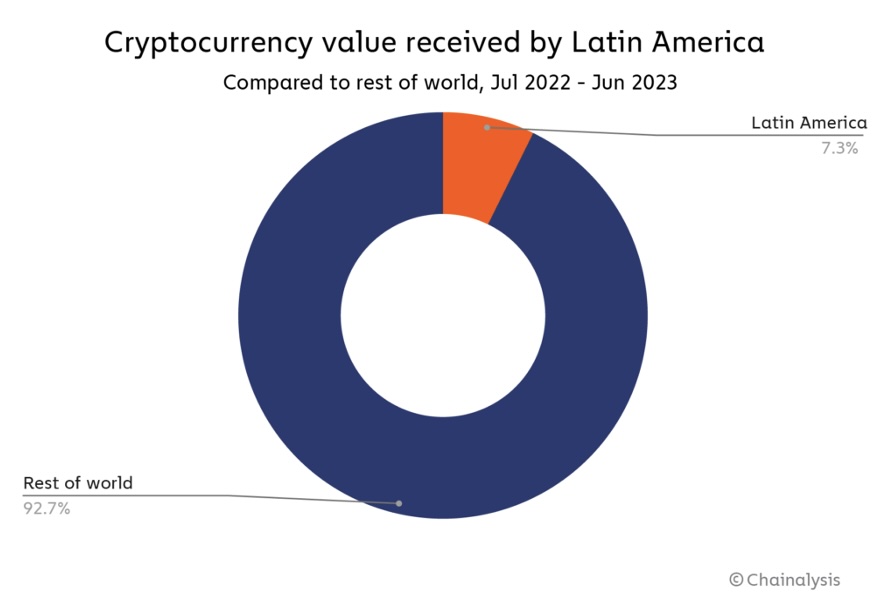As the crypto ecosystem has continued to mature and grow over the past decade, a number of novel offerings have emerged from this realm. Central Bank Digital Currencies (CBDCs) are one such innovation, representing digital forms of a country's fiat currency issued and regulated by the nation's central bank.
Unlike traditional cryptocurrencies, CBDCs are backed by the government and can be used as legal tender, offering several benefits to their parent economies. These include increased financial inclusion, reduced transaction costs, enhanced transparency, and improved monetary policy implementation.
In fact, the concept of CBDCs has gained so much traction recently that, according to the Atlantic Council, 134 countries and currency unions — representing 98% of global GDP — are currently exploring this asset class. Of this figure, 68 countries are in their advanced phase of exploration (i.e., development, pilot, or launch).
CBDCs as a Catalyst for Economic Revival in Latin America
In the context of Latin America, where many countries continue to be faced with economic struggles, the introduction of CBDCs could potentially provide a much-needed financial stimulus. According to the World Bank, the Latin American and Caribbean region experienced a GDP contraction of 6.8% in 2020 due to the COVID-19 pandemic, with millions falling into poverty.
By adopting CBDCs, Latin American countries could capitalize on several benefits, such as providing access to banking services for individuals without traditional bank accounts, allowing them to pour economic resources back into their local economies seamlessly. Moreover, they can help in the faster/cheaper processing of digital transactions, thereby benefiting businesses and consumers alike. Lastly, CBDCs can facilitate easier tracking of financial transactions, reducing corruption and illicit activities.
One ecosystem working towards helping realize this goal is Patex, a blockchain platform dedicated to the Latin American (LATAM) market. Patex aims to facilitate the issuance and tracking of CBDCs through its Layer 2 blockchain solution, while its C-Patex Exchange is designed to enable the trading of these digital currencies.
Patex has already made significant strides, amassing over 100,000 users, with 20,000 monthly visits and a 30-day trading volume of $10 million. Additionally, over the past year, Patex recorded several notable milestones, including the launch of its Network Testnet, Explorer, Mainnet, and a fully functional wallet solution.
These advancements, coupled with a strategic partnership with Brazilian investment firm Acura Capital, saw Patex's valuation soar to $100 million. It was subsequently named "Best LATAM Blockchain Ecosystem of the Year" at the Future Innovation Summit in Dubai. Furthermore, by collaborating with governments on regulation and certification, Patex aims to become the foundation for CBDC in Latin America, leveraging its expertise and infrastructure to facilitate the seamless integration of digital currencies into the region's economies.
Lastly, it bears mentioning that Patex recently launched its native token ($PATEX) across several leading exchanges, such as KuCoin, Gate.io, MEXC, Uniswap, and PancakeSwap, allowing investors to trade the asset seamlessly.
Embracing a New Financial Frontier
As the LATAM region continues to grapple with economic challenges, a parallel narrative of cryptocurrency adoption has also been unfolding — driven largely by factors such as economic instability, high inflation rates, and a growing tech-savvy population. According to a report by Chainalysis, the LATAM region accounted for 7.3% of the world’s cryptocurrency transaction volume in 2022, with Brazil, Mexico, and Colombia leading the way.

Crypto transactions: LATAM vs the rest of the world July 2022 - 2023 (source: Chainalysis)
Additionally, Latin America's crypto economy ranks seventh among the regions studied, closely trailing regions like the Middle East and North Africa (MENA), Eastern Asia, and Eastern Europe. Over the past two years, Latin America's position relative to other regions has remained relatively stable, maintaining its pace of growth and adoption within the global crypto landscape.
Thus, as the LATAM region continues to embrace digital assets and blockchain technology, it presents a fertile ground for the adoption of CBDCs. With ecosystems like Patex paving the way, the integration of government-backed digital currencies could potentially unlock new economic opportunities, positioning Latin America as a leading hub in the global crypto landscape.















